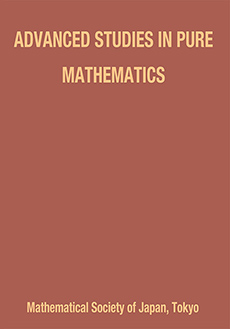Abstract
Real projective structures on $n$-orbifolds are useful in understanding the space of representations of discrete groups into $\mathsf{SL}(n+1, \mathbb{R})$ or $\mathsf{PGL}(n+1, \mathbb{R})$. A recent work shows that many hyperbolic manifolds deform to manifolds with such structures not projectively equivalent to the original ones. The purpose of this paper is to understand the structures of ends of real projective $n$-dimensional orbifolds for $n \geq 2$. In particular, these have the radial or totally geodesic ends. Hyperbolic manifolds with cusps and hyper-ideal ends are examples. For this, we will study the natural conditions on eigenvalues of holonomy representations of ends when these ends are manageably understandable. We will show that only the radial or totally geodesic ends of lens shape or horospherical ends exist for strongly irreducible properly convex real projective orbifolds under some suitable conditions. The purpose of this article is to announce these results.
Information
Digital Object Identifier: 10.2969/aspm/07310069


